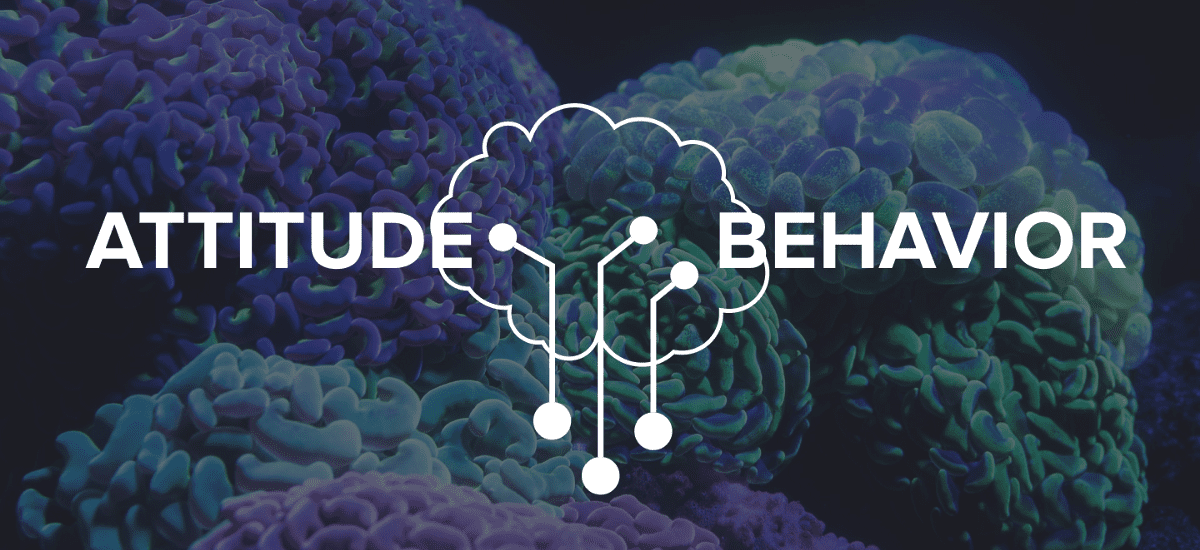When it comes to conducting user research, there are many tried and tested techniques, each with its own set of pros and cons. When it comes to deciding on the best technique for an individual project the decision is not black and white. What’s right for one website or project, may not be right for another. Essentially to really get to know your users and create truly user-centred experiences, you need to make sure you not only consider what they say but also what they do. User research techniques can be categorised into two camps; attitudinal or behavioural.
Attitudinal methods gather qualitative insights into user’s thoughts, feelings, needs, attitudes and motivations. From these methods, you can expect to gather powerful insights in the form of quotations and anecdotes.
Behavioural research methods on the other hand, aim to measure what users actually do, providing quantitative data about how users actually interact with your website. Behavioural research methods can provide answers to questions such as where the majority of users click after first arriving at your homepage, or if users fail to notice the key proposition messaging displaying in your USP bar.
Both attitudinal and behavioural research methods have their place in user research and the most valuable and actionable insights will come from using techniques from both camps in conjunction with one another, essentially to back up what users say with what they actually do.
Humans, as a species are naturally self-conscious, constantly worried about how others perceive us. This desire to be accepted and to fit in, can influence what users say they think and prevent them from being completely honest. This is one of the main downfalls of traditional methods of attitudinal research, such as focus groups, as users are influenced by others opinions and are keen to agree with the majority. This phenomenon is known as herd behaviour and works in the same way as using social proof on websites to increase sales. Although this may not be so prevalent in all attitudinal user research methods.
Despite these downfalls, user’s opinions are incredibly valuable, they are the people interacting with your website, experiencing your brand and ultimately converting. Conducting research with real users, recruited based on your target audience provides insights into their needs and motivations, something that cannot be predicted by practitioners and that will be void of bias or ulterior motive.
Popular techniques within the behavioural camp include analysis of analytics data and A/B testing. The methods mentioned here have the advantage that the data being gathered is from ‘real’ users, who are actually interacting with your website in a real-life scenario, as opposed to in a test environment. These users are making a genuine investment on your website, in terms of time and also potentially in terms of money. Due to the nature of these behavioural research methods, the insights tend to focus on trends identified through analysis of larger numbers of users, in contrast to attitudinal methods which are somewhat constrained by time and available resources. However, behavioural research techniques could also be conducted in a lab setting, such as eye tracking studies and emotional response analysis.
Despite the value of gathering data about what users do and how they interact with your website, quantitative data is open to individual interpretation, which is why it is important to provide context by also asking users why. A heat map produced from an eye-tracking study may show heavy areas of attention spread across the website’s homepage. This could be interpreted as a positive thing, showing that users are engaged and interested in the homepage content. However, attention spread across the homepage could also suggest that there is no clear route for users to get started from and therefore indicate a struggle. Similarly, analytics data may show that a large percentage of users leave your website from a particular page, but it will not tell you why they left your website and if they left satisfied or frustrated.
To gain the most rounded picture of your users, conduct attitudinal and behavioural methods simultaneously. Use exit surveys alongside analysis of analytics data to find out why users leave your website before converting. Conduct moderated user testing sessions facilitated with eye-tracking technology to help prompt users to articulate why they did what they did. Taking on a dual approach research methodology will provide insights which provide strong and robust evidence to facilitate effective changes to your website.







